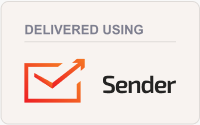Transmission
PBFD virus is shed in feces, oral secretions, and feather dander, facilitating transmission through direct and indirect contact between infected and susceptible individuals. Additionally, birds carrying the virus can transmit it to their eggs, and young birds may become infected through regurgitated food from infected parents.
The virus is capable of surviving in the environment for several months, prolonging the potential for contaminated materials to serve as sources of infection.
Clinical signs
PBFD is a serious threat to both captive and wild psittacines, often causing severe illness and death. Symptoms vary based on the age of infection and disease progression. Typically, affected birds show symmetrical feather loss and abnormal plumage coloration, progressing to baldness. Beak abnormalities like cracks and overgrowth are common. Infected birds may initially show no signs. In some cases, birds aged 6-24 months may exhibit depression, diarrhea, lethargy, and immunosuppression without visible beak or feather issues, making them vulnerable to secondary infections. In young birds under 6 months, sudden death can occur without warning.
Diagnosis
Diagnosing severe, ongoing PBFD is relatively straightforward. However, challenging cases involve birds or species exhibiting subtle symptoms due to age or immunity factors. While histological examination of feather follicles is commonly used to confirm clinical disease, it's not ideal for diagnosing incubating infections. PCR testing for the presence of the virus can be performed on blood and feather samples.
Treatment and Prevention
The current approach to treating PBFD involves providing supportive care to prevent secondary infections, as there is no cure for this disease. Single pet birds in caring homes can be maintained as long as their quality of life remains satisfactory. Supplementing their diet with vitamins, minerals, and probiotics can boost their immune system, while regular treatment for secondary infections is essential.
Controlling this disease effectively requires isolating suspected carriers, conducting testing, and if needed, euthanizing to prevent potential outbreaks. Thoroughly sterilizing all cages and equipment is crucial. Remaining birds must undergo frequent and regular testing to detect new infections. Once a group of birds is infected, completely eliminating the virus proves exceedingly difficult.
